What Color Light Doesn’t Ruin Night Vision? Explained
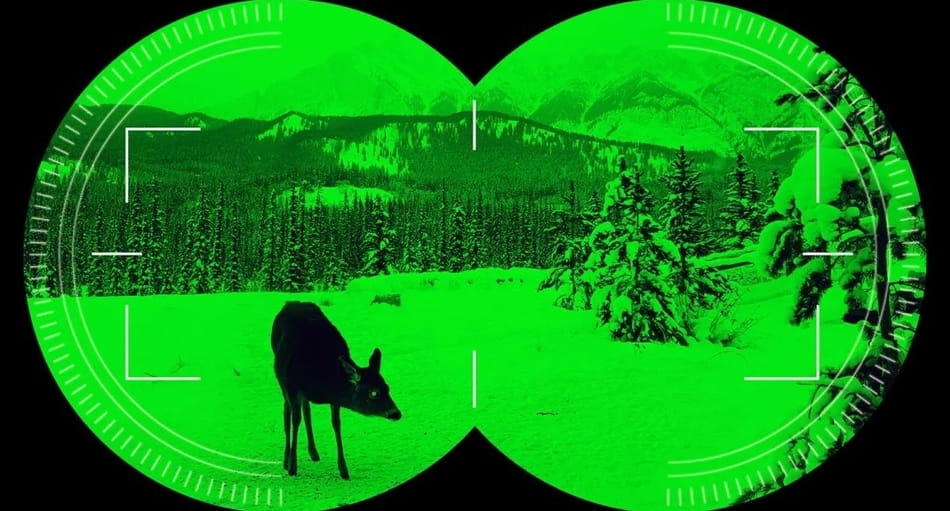
Switching from an intensely bright light to complete darkness can be a bit unplesent. The exposure to a stark white light makes your pupils become smaller, thereby reducing light input, and they require time to get larger (or dilate) after you turn the light off.
This situation often results in compromised night vision as your body adapts to the sudden shift in lighting. Fortunately, various shades of light could assist in maintaining night vision during the transition from illuminated to dim environments. In this article, we’ll talk about the best color light to preserve night vision. So, let’s start!
What is the best color for night vision? Red light is often used for night vision. Red color causes less contraction of the pupils compared to bright white light and adds better vision in the dark. Therefore, using a red light helps to avoid the temporary vision impairment that comes with transitioning from a well-lit environment to a darker one.
Red light is best for preserving night vision, but there are instances where using blue or green lights might be better. In the following sections of this article, we’ll explain why red lights excel in safeguarding night vision and highlight situations where using blue, green or white lights might be much better choice.
Table of Contents
Which Light Color Helps Maintain Night Vision Best?
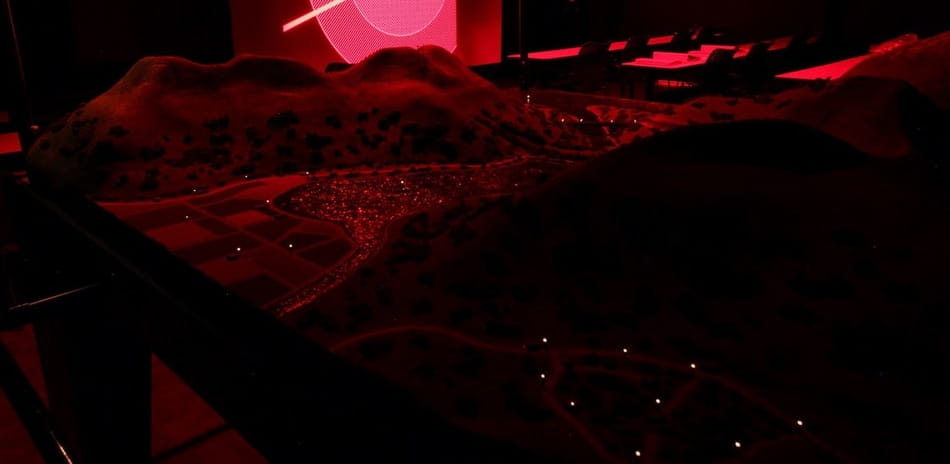
There are two main ways how you can preserve night vision. Red light is much better for maintaining night vision but makes finding some details in the dark harder. Greenlight follows closely, offering more clarity and contrast while still preserving night vision.
Related Article: How to Keep Bears Away While Camping? 8 Tips
Although red is optimal for maintaining night vision and is a little bit better, green is better for clarity. Let’s delve into the pros and cons of various light colors. Here’s a short summary of each light color, listed from the most to least beneficial.
- Red Light (Most Effective): The best light for preserving night vision is, without a doubt, the red light. When we look deep into the visible light spectrum, red has the longest wavelength, which requires the most light to be noticeable. Our eyes use cones to notice the bright lights. The intensity of the red color is only detected by the cones, leaving the rods unaltered by the red light. Eye proteins also factor into this, but we’ll skip the complex details for now.
- Green Light (Excellent): Right after red light, green light provides the second best preserving night vision and offers a unique advantage when used in the dark. As green falls just under the center of our color spectrum, it’s very easy to detect this color at night. Using a green light increases contrast/clarity, which is why most goggles that are designed for night vision opt for a green bulb rather than a red one. It enhances near-sight reading and allows easy spotting of animal/human outlines.
- Blue Light (Good Enough): Blue lights provide slightly better features than white for night vision, but you’ll still notice a transition when turning off your blue light. Blue lights are primarily used at night to reveal blood trails, detect bodily fluids (such as urine, sweat, etc.), identify oil leaks, and by fishers to spot and attract fish. Also, blue lights provide brighter light output as it’s nearer to the white spectrum.
- White Light (Least Favorable): Most flashlights and bulbs use white light for good reasons. It mimics natural daylight the closest. White lights are excellent for everyday use, but going from white light to complete darkness can be stark. Adapting your eyes to the light change takes a while, resulting in poor night vision.
Before delving into why red light is preferable, let’s take a moment to understand the light spectrum.
Visible Light Spectrum: Why Red Lights Are Ideal for Night Vision
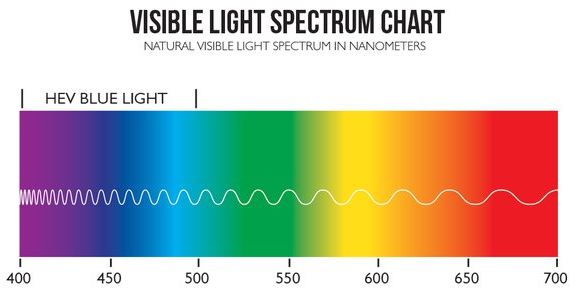
To better understand why red light performs well in darkness, we need to consider the VLS (visible light spectrum). In this section I’ll try to simplify this explanation and keep the scientific explanations to the bare minimum!
Red color has the longest wavelength among all colors. These waves are more spread out. Hence more light is required for the color red to be perceived.
On the other hand, as we move towards the blues/purples side of the spectrum, the wavelength gets shorter. That means these waves are more densely packed and require less light to become noticeable.
Our eyes contain light-sensitive cells named cones and rods that manage light and decode color. Think of the cones as a high-resolution camera capturing light, color, and detail, while rods can be considered like an old black-and-white Television. Cones play the main role during daylight, while rods kick in to enhance night vision when it gets dark.
We rely on cones in bright daylight and on rods for low-light conditions like dusk or nighttime. In bright light, rods become overwhelmed and take a backseat. However, in darkness, rods handle most of the light detection, while cones help discern colors.
Rods cannot perceive the red wavelength and thus are totally blind to it. As a result, only the cones can detect red light, leaving the rods unaffected. This explains why red light is the best choice for night vision.
When To Use Red Light During The Dark?
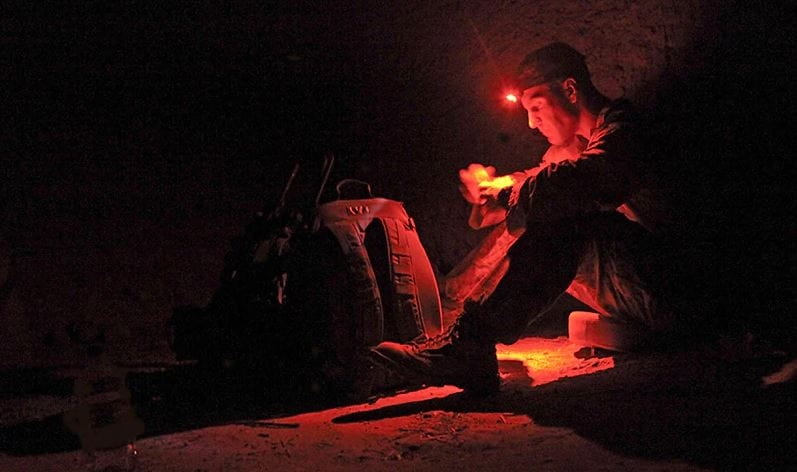
The light spectrum that is visible and that we discussed earlier clarifies why red lights don’t impact night vision. However, it’s not always the best choice to use red light. These lights are good for simple tasks such as normal walking in the woods, but it’s challenging to spot finer details or contrast in dim light with them.
Owing to its long wavelength, red is the toughest color to perceive in low light. The red light is detected solely by our cones, which require ample light to focus accurately. Thus, while a red light won’t interfere with our night vision, it might make it difficult to see intricate details.
This is the reason red lights are, in most cases, used in emergency lights in most of buildings. To navigate a dark hallway that is lit by some emergency sign, a person doesn’t need to see all the details, but it’s essential to retain night vision until reaching the outdoors. The ability to transition from lit rooms to darker corridors without affecting night vision is crucial.
Avoid using red light if you’re in a situation where you need to do some tasks that will require sharp vision to detail or improved visibility at close range or distance. Red lights work reasonably well at moderate distances up to 35 m, but spotting outlines at larger distances can be problematic.
Reading under red light can be equally troublesome as the edges tend to blend. In these scenarios, green lights emerge as a superior option!
Related Article: Does Putting a Rope on The Ground Keep Snakes Away?
Impact of Green Light on Night Vision: Better For Clarity
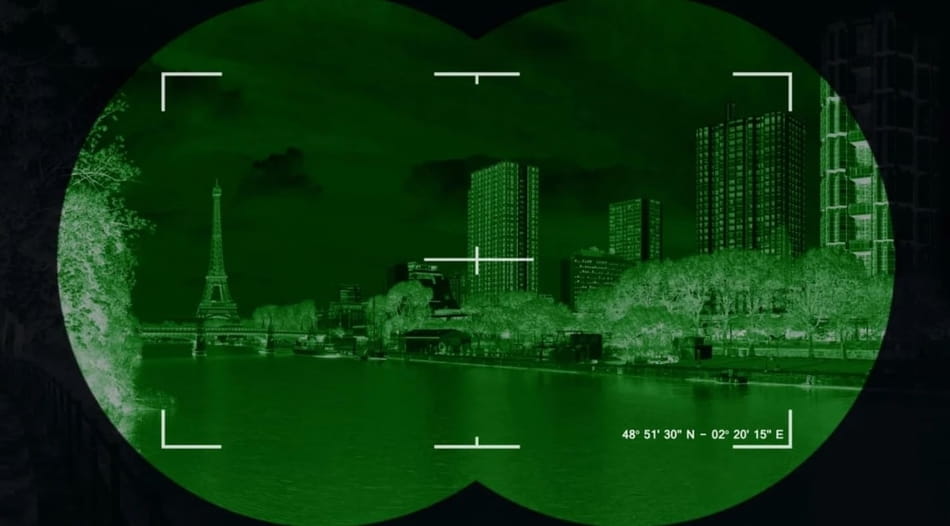
Greenlight is very easy to notice in the dark. The reason is that it falls under the middle of that visible light spectrum. Given its central position, both cones and rods contribute to its perception. While cones share the load, thus conserving some night vision, the rods majorly contribute to bringing out the clarity in dim light.
Undoubtedly, our night vision will slightly decrease when the lights are turned off, but the effect is far less than that with blue or white lights. You’re compromising a small amount of night vision for enhanced contrast and sharpness after the light is extinguished.
This is the rationale behind the military’s use of green displays with goggles that are designed for night vision. These goggles offer immense detail while in use and retain about 70% of the typical night vision in darkness.
The recovery period after turning off this green light is brief, generally around two minutes, in contrast to the 20-minute adjustment time after exposure to white light.
Impact of Blue Light on Night Vision: Better For Fluorescent Objects Glow
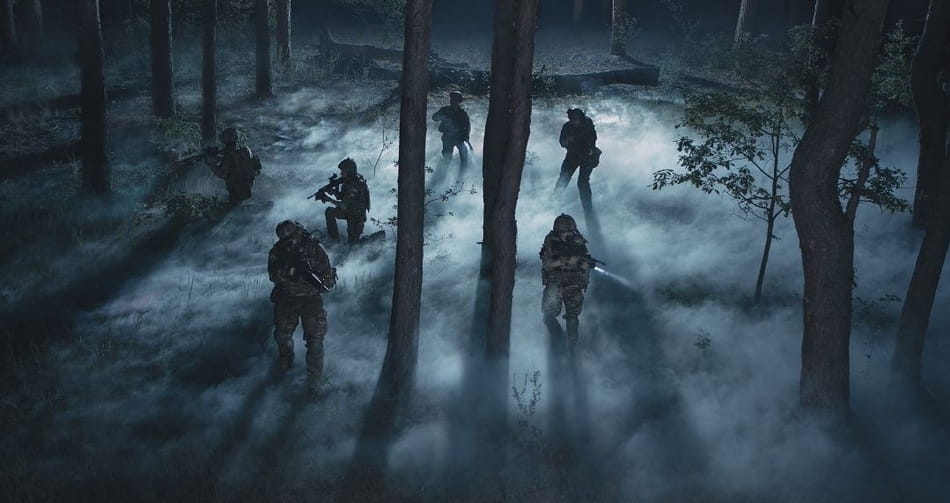
Lights within the purple and blue range are not the best choice if you want to preserve night vision. While better than glaring white light, they primarily engage the rods in our eyes for light perception. As a result, your eyes rapidly narrow in response to blue light, and readjusting to darkness afterward can take some time (around 20 minutes).
Blue lights are typically used when the task involves tracing or discovering objects with fluorescent characteristics, which shine under blue or black light. Various substances like blood, bodily fluids (such as sweat, urine, and body oils), mechanical oils/fluids, and other chemicals that possess fluorescent properties cause them to shine under such light.
Hunters commonly use blue lights to follow blood trails, by fishermen to spotlight and attract fish, by forensic teams to scrutinize crime scenes, and by engineers or mechanics to detect fluid leaks in some machines.
Here is one interesting video that you can watch about blue light:
Final Thoughts
Ultimately, red light emerges as the true winner when it comes to preserving night vision. Despite not providing detailed clarity like green or the fluorescence-enhancing capabilities of blue, its impact on night vision is minimal. It allows our eyes to smoothly transition between darkness and light without significant adjustment time. So, when aiming to retain good night vision, red light is for sure the best choice. I hope this article has helped you.

